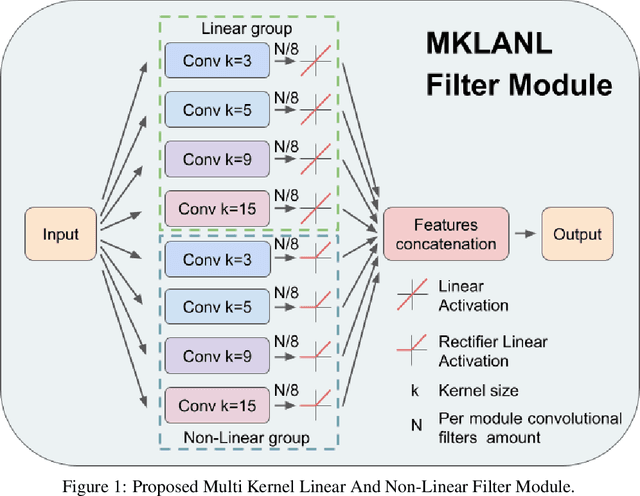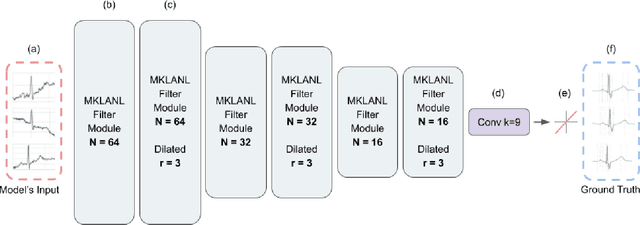David Castro Piñol
DeepFilter: an ECG baseline wander removal filter using deep learning techniques
Jan 12, 2021



Abstract:According to the World Health Organization, around 36% of the annual deaths are associated with cardiovascular diseases and 90% of heart attacks are preventable. Electrocardiogram signal analysis in ambulatory electrocardiography, during an exercise stress test, and in resting conditions allows cardiovascular disease diagnosis. However, during the acquisition, there is a variety of noises that may damage the signal quality thereby compromising their diagnostic potential. The baseline wander is one of the most undesirable noises. In this work, we propose a novel algorithm for BLW noise filtering using deep learning techniques. The model performance was validated using the QT Database and the MIT-BIH Noise Stress Test Database from Physionet. In addition, several comparative experiments were performed against state-of-the-art methods using traditional filtering procedures as well as deep learning techniques. The proposed approach yields the best results on four similarity metrics: the sum of squared distance, maximum absolute square, percentage of root distance, and cosine similarity with 4.29 (6.35) au, 0.34 (0.25) au, 45.35 (29.69) au and, 91.46 (8.61) au, respectively. The source code of this work, containing our method and related implementations, is freely available on Github.
Pupil Center Detection Approaches: A comparative analysis
Jun 19, 2020



Abstract:In the last decade, the development of technologies and tools for eye tracking has been a constantly growing area. Detecting the center of the pupil, using image processing techniques, has been an essential step in this process. A large number of techniques have been proposed for pupil center detection using both traditional image processing and machine learning-based methods. Despite the large number of methods proposed, no comparative work on their performance was found, using the same images and performance metrics. In this work, we aim at comparing four of the most frequently cited traditional methods for pupil center detection in terms of accuracy, robustness, and computational cost. These methods are based on the circular Hough transform, ellipse fitting, Daugman's integro-differential operator and radial symmetry transform. The comparative analysis was performed with 800 infrared images from the CASIA-IrisV3 and CASIA-IrisV4 databases containing various types of disturbances. The best performance was obtained by the method based on the radial symmetry transform with an accuracy and average robustness higher than 94%. The shortest processing time, obtained with the ellipse fitting method, was 0.06 s.
Automatic Handgun Detection in X-ray Images using Bag of Words Model with Selective Search
Mar 04, 2019Abstract:Baggage inspection systems using X-ray screening are crucial for security. Only 90% of threat objects are recognized from the X-ray system based in human inspection. Manual detection requires high concentration due to the images complexity and the challenges objects points of view. An algorithm based on Bag of Visual Word (BoVW) with Selective Search is proposed in this paper for handguns detection in single energy X-ray images from the public GDXray database. This approach is an adaptation of BoVW for X-ray baggage images context. In order to evaluate the proposed method the algorithm effectiveness recognition was tested on all bounding boxes returned by selective search algorithm in 200 images. The most relevant result is the precision and true positive rate (PPV = 80%, TPR= 92%). This approach achieves good performance for handgun recognition. In addition, it is the first time the Selective Search localization algorithm was tested in baggage X-ray images and showed possibilities with Bag of Visual Words.
 Add to Chrome
Add to Chrome Add to Firefox
Add to Firefox Add to Edge
Add to Edge